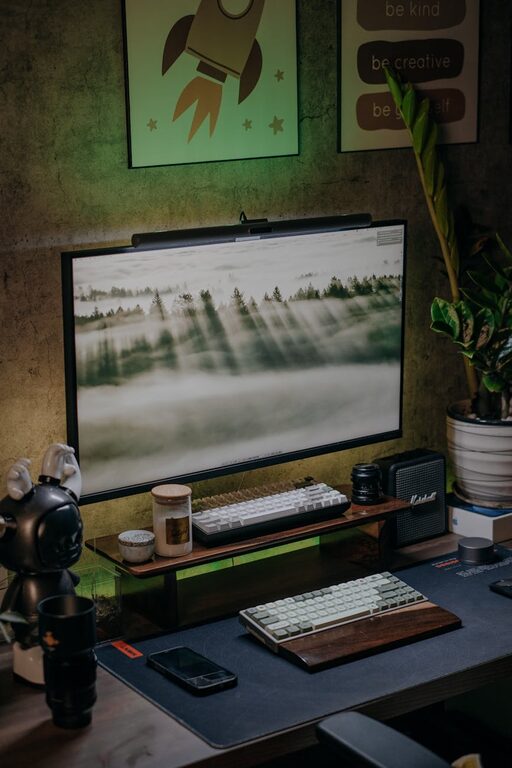Why a Good Desk Setup Matters
A well-organized and comfortable desk setup is more than just aesthetic—it directly influences your productivity, focus, and physical well-being. Spending long hours at a poorly arranged workspace can lead to discomfort, distractions, and decreased efficiency. In this article, you’ll find practical tips to craft a desk arrangement that supports your concentration and comfort.
Choose the Right Desk and Chair
Desk Height and Size
Select a desk that suits your height and workspace needs. A standard desk height is about 73 cm, but the ideal height depends on your body size. The desk should provide enough surface area to hold your computer, accessories, and any materials without clutter.
Ergonomic Chair
Invest in a chair with adjustable height, lumbar support, and comfortable cushioning. Proper lumbar support prevents back pain, while adjustability ensures your feet rest flat on the floor, promoting good posture.
Optimize Monitor Placement
Eye Level Positioning
Position your monitor so that the top of the screen is at or slightly below eye level. This setup reduces strain on your neck and eyes by keeping your head in a natural position.
Distance from Eyes
Maintain a distance of about 50-70 cm between your eyes and the monitor. This helps prevent eye fatigue and enables you to view the screen comfortably.
Use Multiple Monitors Wisely
If you use more than one screen, arrange them at an equal distance and angle to avoid repetitive neck movements.
Organize for Efficiency
Declutter Your Desk
Keep only essential items on your desk to minimize distractions. Use storage solutions like drawers, shelves, or desk organizers to store supplies neatly.
Cable Management
Tidy cables using clips, sleeves, or under-desk trays. A neat cable setup prevents tangling and maintains a clean workspace.
Proper Lighting
Position your desk near a source of natural light but avoid glare on your screen. Supplement with adjustable desk lamps to reduce eye strain in the evening.
Enhance Comfort and Focus
Maintain Good Posture
Sit upright with your back supported, shoulders relaxed, and feet flat on the ground. Use a footrest if needed.
Incorporate Movement
Take regular breaks to stand, stretch, or walk around. Consider a sit-stand desk to alternate between sitting and standing positions.
Personalize Mindfully
Add personal touches like plants, photos, or decor to make the space inviting, but avoid overcrowding to maintain focus.
Keep Essentials Within Reach
Arrange frequently used items, such as your phone, notebook, or pen holder, within arm’s reach to minimize interruptions. This layout helps keep your attention on work rather than reaching for tools.
Reduce Distractions
Noise Control
Use noise-canceling headphones or white noise machines if you work in a noisy environment. A quiet setting can significantly improve concentration.
Digital Organization
Keep your desktop and browser tabs organized. Close unused applications to avoid multitasking overload.
Maintain Your Setup Regularly
Periodically clean your desk and reassess your setup. Adjust chair height, monitor position, and organization as needed to accommodate changes in tasks or comfort preferences.
Summary
Creating a desk setup that prioritizes focus and comfort is achievable with intentional choices. The right furniture, proper monitor placement, organized space, and ergonomic habits will help you work more efficiently and feel better throughout your day. Start making these adjustments today to enjoy a more productive and comfortable workspace.

